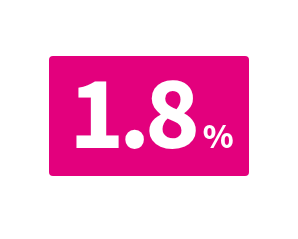What happens during a government shutdown furlough?
What happens to federal employees during a government shutdown? Learn who keeps working, who’s furloughed, and how pay, benefits, and leave are affected.
When Congress doesn’t pass a law to fund the government, many federal operations pause until new funding is approved. During these periods, known as government shutdowns, some federal employees are placed on temporary unpaid leave, called furloughs, while others continue working in essential roles.
As of July 2025, there were 2.9 million federal government jobs.
Civilian federal government employees, January 1939 to July 2025
Agencies must stop activities that rely on annual appropriations unless those activities are legally exempt or “excepted,” such as protecting life or property.
What exactly is a shutdown furlough? Who does it affect? What happens to pay, benefits, and leave once the government reopens? Here, we answer the most common questions about government shutdown furloughs.
What is a furlough?
A furlough is a temporary, unpaid leave that happens for non-disciplinary reasons. They usually happen when there’s no money available to keep normal operations running.
What’s a “shutdown furlough”?
A shutdown furlough happens when Congress doesn’t pass a spending bill or continuing resolution to fund government operations and agencies must furlough employees. This can affect up to thousands of employees at a single agency.
Who keeps working during a shutdown?
Government employees fall into three groups:
- Excepted employees are legally required to continue (for example, air traffic control or law enforcement). They keep working and are paid later.
- Exempt employees are funded through other sources (like fees or permanent appropriations), so they’re not affected by Congress negotiating a budget.
- Furloughed employees have their work paused. They’re sent home without pay but receive back pay once funding resumes.

Do employees get paid during a shutdown?
No one is paid during the lapse.
Once funding is restored, all employees — both excepted and furloughed — receive retroactive pay for the time the government was closed, as required by the Government Employee Fair Treatment Act of 2019. Agencies recall employees to duty and process back pay as soon as possible.
Federal law forbids them from volunteering to perform their regular duties without pay during a shutdown.
Can employees take another job while furloughed?
Possibly. They must check their agency’s policies and may need approval for outside employment. They’re still federal workers, so ethics rules still apply.
Are employees still covered by health insurance?
Health insurance coverage under programs like the Federal Employees Health Benefits and the Federal Employees’ Group Life Insurance continues even when paychecks are paused.
Missed premiums will be deducted once normal pay resumes.
However, Flexible Spending Accounts (like FSAFEDS) can’t reimburse claims until the employee starts getting paid again.
What happens to scheduled leave?
All paid leave, both under the Family and Medical Leave Act or otherwise, is canceled during a shutdown because agencies can’t legally authorize spending.
Once the shutdown ends, employees are retroactively paid and don’t lose accrued leave.
How are holidays handled?
If a shutdown covers a federal holiday, furloughed employees don’t work that day but still receive back pay for it after the shutdown ends.
Excepted employees who work on a holiday will receive holiday premium pay later.
Where do these rules come from?
These guidelines, and much more, can be found at the Guidance for Shutdown Furloughs from the (Office of Personnel Management (OPM).
Get the latest data on the federal government budget, spending, and more by signing up for our weekly newsletter.
